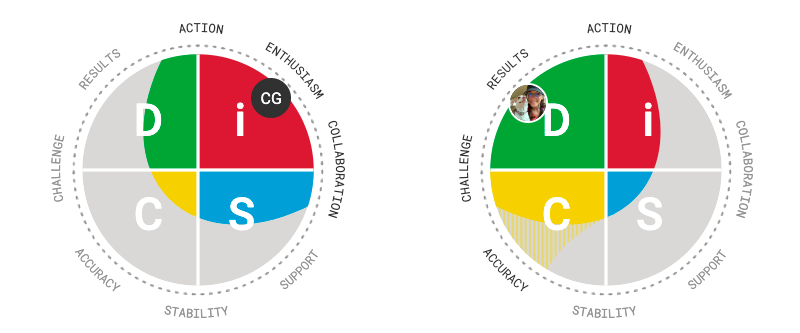As I mentioned in last week’s blog post, Two Key Principles Every Manager Should Know, over the next few weeks I’ll be going over the four general personality types of Everything DiSC.
Now, I know you might be tired of personality tests. I get it!
You have a lot on your plate and those assessments often end up being a waste of company time. However! This is often the case when people are NOT taught when and how to use these assessments.
So over the next four weeks as I describe the four basic types of personality styles; hopefully, you can start to see how beneficial they can be when you understand the tests themselves and how to use the information provided.
What do ya have to lose?!
WHAT IS DiSC?
Before we begin looking at the first personality, what exactly is Everything DiSC?
Everything DiSC is a tool that I use (and you can, too) to improve communication by better understanding yourself and the individuals with whom you interact.
As a manager, this is extremely helpful in that you can learn your own style and those of your employees. Then use that information to speak to each one in way that works best for them to receive information, be motivated and feel valued.
Each letter of DiSC represents one personality type. You’ve got D, i, S, and C.
But as you know, humans are complex. So it isn’t always that simple!
Several people overlap due to different characteristics from multiple parts of DiSC.
To help you better understand, here are two visuals of individual DiSC assessments. The map to the left is mine while the map to the right is Megan’s, my daughter and COO of Carol Grubbe LLC.
While we are very different, we work so well together because of those differences. However, we have both learned it is extremely important that we understand how each other best receives information, likes to work, etc. It makes working together even better!

CHARACTERISTICS OF THE D-STYLE PERSONALITY
Now! Let’s dive into this post’s focus, which is the first personality style of DiSC, the “D”.
When looking at the two basic questions to ask that were shared in the video included in the first post of this series, this individual is the one you answered is task-oriented and outgoing.
Here are some adjectives for people who fall on the D part of the DiSC map:
- Dominant
- Direct
- Driven
- Demanding
These individuals are often seen as challenging and bossy. They leave you wondering if you are truly fit to be a manager. Almost as if they are managing you. But it is important to
It can seem as if things usually have to be their way because they need to be in control. To their co-workers, they might be viewed as caring only about themselves.
Now, while this may all be true, a really good manager recognizes that these types of employees have a lot of positive qualities.
This type of person takes responsibility and gets shit done, often taking the initiative. They are great at taking the lead, holding others accountable, and encouraging them to be the best that they can be. They are focused on the goal and highly motivated to win, therefore, getting results. And? They actually enjoy a good challenge.
All in all? A person who falls closer to the D-style on the Everything DiSC map is the one who allows you to focus on the other duties you have as a manager. You know they don’t need you to micromanage them to finish the job. And to do so on time.
TIPS FOR MANAGING THE D-STYLE PERSONALITY
So, how can you as a manager develop this person to benefit both the team and the company?
- Clarify their duties. Be direct about the things they are allowed (or not allowed) to do.
- Give them a set goal with freedom and control to get the job done.
- Provide opportunities for them to take the lead. This might mean giving them the task of teaching or leading a team. But remind them to be aware of others feelings.
- Involve a variety of tasks with deadlines. When presenting those tasks, do your best to get to the point and avoid any fluff.
- Find ways to help them see what others need and how to take into consideration those needs to contribute to a work environment that allows everyone to feel respected.
These are just a few ways to communicate with those employees who are more direct, dominant and sometimes challenging.
For more tips like these, download your free copy of 5 Tips for Motivating Your Employees, a resource for managers! And don’t miss the next blog post which will move right along to the i-style of Everything DiSC.

